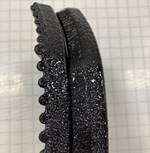Integris Composites becomes U.S. Army FLRAA armor supplier
New contract with Bell Texton Inc. will equip the Bell V-280 Valor with fit-for-purpose composite military armor.
The Bell V-280 Valor, pictured here, was chosen by the U.S. Army as the winner of its FLRAA Program. The new assault aircraft will fly twice as far and twice as fast as the current fleet. Source | Danazar- Creative Commons
Integris Composites (previously TenCate Advanced Armour, Vienna, Va., U.S.), a manufacturer of composite armor for land vehicles, aircraft, naval craft, protection housing for optronics and moew, has been selected by Bell Textron Inc. (Fort Worth, Texas, U.S.), as a supplier of armor systems for the company’s future long-range assault aircraft (FLRAA).
This tiltrotor aircraft is the platform selected for the U.S. Army’s FLRAA weapons system. According to Bell Textron, it will provided capabilities well beyond that of the UH-60 Black Hawk helicopter with increased speed, range and payloads.
“Integris’ connection to utility aircraft development can be traced by to the Vietnam-era “Huey” (UH-1 Iroquois) and the present-day UH-60 Black Hawk, which has served as the Army’s utility tactical transport aircraft (UTTAS) since 1979,” says David Cordova, chief commercial officer for Integris Inc., the U.S. component of Integris Composites. “[The] FLRAA is a marvel of engineering that promises to redefine the boundaries of speed, agility and operational versatility/survivability.”
The FLAA is the latest armor contract for Integris’ airborne segment, which is supporting several other aerospace companies. “We provide armored kits such as the H-125, MH-139, as well as the C-130J for this last one, in partnership with QinetiQ, says Cordova. “But Integris is also providing high-performance, lightweight, fit-for-purpose composite military armor on the ground and in the water as well as in the air.”
Related Content
-
Orbital Composites wins AFWERX award for Starfighter drone fleet
Under the TACFI contract, Orbital is implementing the AMCM process to build 3D printed composite multi-mission UAS aircraft, surpassing $10 million in government awards.
-
Plant tour: Renegade Materials Corp., Miamisburg, Ohio, U.S.
Renegade Materials is known for high-performance prepregs for aerospace applications. Following its acquisition by Teijin in 2019, the company has expanded capacity and R&D efforts on a range of aerospace-targeted materials.
-
MATECH C/ZrOC composite is deployed in hypersonic aeroshells
Ultra high-temperature insulating CMC targets hypersonics, space heat shields and other demanding applications, tested up to 2760°C under extreme stagnation pressures.














